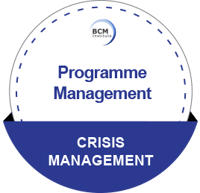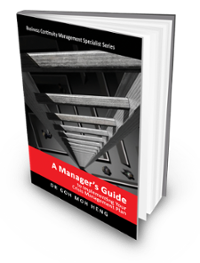Continuous Improvement
To achieve a state of crisis preparedness and have the strategic response capacity to manage and recover from crises, a crisis management system must have integrity and currency. Techniques to build integrity and currency into the crisis plan will be thoroughly explained.
Hierarchy of Crisis Preparedness within Organization
The organization’s CM maturity can be described using the Level of Crisis Preparedness table below. The table is adapted from Mitroff and Pearson (1993).
|
Stage |
Crisis Preparedness Level |
Description of CM Preparedness Level This organization: |
|
1 |
Prone to crisis |
Has virtually no early warning system in place for detecting major crises. Believe that crises rarely occur. Rarely plan for damage containment before the crisis hits, and recovery systems are not established. Do not learn from their past mistakes because they do not conduct formal review sessions. |
|
2 |
Susceptible to crisis |
Represents a decisive advance beyond stage one. Although better prepared, are still very vulnerable to a variety of crises. Have a comprehensive program for natural and human-directed disasters of all kinds, but are not likely to plan or prepare for other crisis families. Plan for neither external economic attacks nor external information attacks. |
|
3 |
Adjusted to Crisis |
Have in-depth plans and procedures for a limited number of breakdowns, such as computer malfunction, serious operator errors or major security breaches. Justify their actions with rationalizations such as “our size will protect us from a major crisis”, “excellent, well-managed companies do not have crises” and “crisis management is a luxury which we cannot afford”. Do not appreciate the complex relationships that will contribute to a crisis. |
|
4 |
Braced for Crisis |
Do not represent a definite improvement from the "Adjusted to Crisis" category concerning the types of crisis identified and the preventive actions. The refinements are found in the management of the phases of the crises. Has CM effort that may be formalized for the earlier as well as the later phases of the crisis. Thus in addition to planning for crisis containment, some planning may take place for crisis prevention and detection. As such, the effort is directed towards the proactive mode of CM. Has created a CM team, which will bear responsibility for facilitating and formalizing CM efforts. |
|
5 |
Prepared for Crisis |
The organization: Has developed plans and procedures that explicitly take into account all the critical systems that prevent major crises. Does not see the causes of crises as purely technical. Is sensitive to human, organizational and staff feedback as well. As a result, they are much more likely to have explicit programs that simultaneously address human factor issues. Has a greater awareness of the underlying organizational culture and how it contributes, positively as well as negatively, to CM. |
Mitroff and Pearson (1993) argue that CM is not equivalent to planning for a crisis scenario because the latter may be ineffective as it fails to address four major areas of concern. An integrated approach must explicitly and systematically attend to the potential overlaps and interactions of the four major variables of crisis management:
- Types
- Phases
- Systems
- Stakeholders
It is suggested that by analyzing the organizational performance in each of the four major variables, one could establish a hierarchy of five stages of crisis preparedness: crisis-prone, crisis susceptible, crisis adjusted, crisis braced and crisis preparedness.
Goh, M. H. (2016). A Manager’s Guide to Implement Your Crisis Management Plan. Business Continuity Management Specialist Series (1st ed., p. 192). Singapore: GMH Pte Ltd.
Extracted from Programme Management
Find out more about Blended Learning CM-300 [BL-CM-3] & CM-5000 [BL-CM-5]
 |
 |
 |
 |
![TMM [BL-CM-5]](https://no-cache.hubspot.com/cta/default/3893111/54680a64-9914-4958-8cec-1bc451ed5053.png) |
![[BL-CM] [5] Register](https://no-cache.hubspot.com/cta/default/3893111/82024308-16f4-4491-98be-818a882c6286.png) |
 |
Please feel free to send us a note if you have any of these questions to sales.ap@bcm-institute.org |  |




